Tag: ultrasound
Rib-Indexed POCUS vs. Chest X-Ray for Lung Recruitment Assessment in Ventilated Neonates with Moderate-Severe ARDS on Pulmonary Surfactant Therapy
Rib-indexed posterior approach POCUS is a reliable, radiation-free modality for real-time lung recruitment assessment in neonates with NARDS, demonstrating noninferiority to CXR. Notably, our study is the first to propose... read more
Lung Ultrasound in the Critically Ill: The BLUE Protocol
Written by a pioneer in critical care ultrasound, this book discusses the basic technique and "signatures" of lung ultrasound and explains its main clinical applications. The tools and clinical uses of the BLUE protocol,... read more
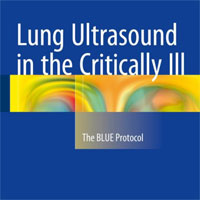
Wireless Wearable Doppler Ultrasound: Monitoring Trauma Patients
This study demonstrated the feasibility of placing the wireless, wearable Doppler ultrasound on severely injured trauma patients admitted to the trauma bay of a busy level 1 trauma center. The device reliably captured... read more
Bedside Procedures for the Intensivist
Bedside Procedures for the Intensivist delivers practical tips and clear, step-by-step instruction on the most common procedures in the ICU. The convenient and portable handbook focuses on ultrasound-guided techniques, including... read more
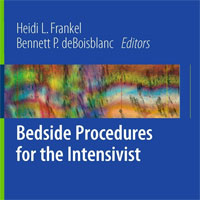
Accurate Percutaneous Tracheal Tube Placement Using Visual-Guided Transillumination Method
The novel Illuminated Tracheal Alignment Guide (iTAG) device and technique is the first of our knowledge to test the identification of tracheostomy sites by way of laser-guided transillumination. We believe this device... read more
Predicting Renal Outcomes in Cardiac Surgery Using Intraoperative Renal Near-Infrared Spectroscopy Monitoring
This study shows that intraoperative monitoring of near-infrared spectroscopy (NIRS) values and monitoring of critical thresholds may be an important tool in predicting the development of acute renal failure (ARF) and other... read more
Weaning Failure From Mechanical Ventilation
Ultrasound is a useful tool for identifying weaning failure from cardiovascular, diaphragmatic, respiratory, and airway origin. The strengths of our scoping review lie in its comprehensive approach to synthesizing diverse... read more
Peripheral and Respiratory Muscle Weakness and Functional Impairments in ICU Patients
This study demonstrated that patients discharged from ICU in this resource-constrained setting presented with peripheral and respiratory muscle weakness at unit discharge. Muscle weakness occurred despite a short ICU... read more
Point-of-Care Ultrasound for the Neonatal and Pediatric Intensivist: A Practical Guide on the Use of POCUS
This book, written by internationally renowned experts, is a comprehensive text covering all aspects and recommendations regarding the use of POCUS for critically ill neonates and children. Point of Care Ultrasound (POCUS)... read more
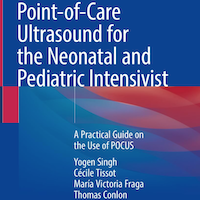
Echocardiography for Intensivists
This book contains all the information that readers will require in order to perform echocardiography and to interpret the findings correctly. After an introductory chapter on the essential physics of ultrasonography,... read more
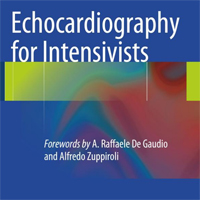
Basic Ultrasound Skills “Head to Toe” for General Intensivists (Lessons from the ICU)
The aim of this book, part of the European Society of Intensive Care Medicine (ESICM) textbook series, is to educate and train practitioners in the safe and competent use of diagnostic ultrasound imaging in the visualization... read more
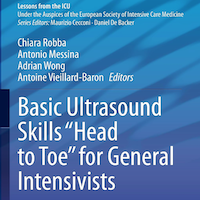
Non-invasive ICP Monitoring for TBI Patients When Invasive Systems Not Available
Using a mixed-method approach involving literature review and an in-person consensus by experts, a set of recommendations designed to assist clinicians managing traumatic brain injury (TBI) patients using nICP systems plus... read more
POCUS-first vs. CT-first Approach on ED LOS in Patients with Acute Cholecystitis
While point-of-care ultrasound (PoCUS)-first and computed tomography (CT)-first approaches resulted in comparable emergency department (ED) length of stay (LOS) and time to surgical consultation for patients with mild AC,... read more
Mortality Predictor with sPAP in Elderly Critically Ill with Severe COVID-19 Pneumonia
Mortality in general ARDS patients remains high, with many experiencing long-lasting sequelae. Numerous studies have been conducted to identify predictors of mortality in COVID-19 patients, particularly regarding right ventricular... read more
Prognostic Accuracy of POCUS in Patients with Pulseless Electrical Activity
This systematic review and meta-analysis shows that among 1,202 patients across 18 studies, point-of-care ultrasound (POCUS) exhibits high prognostic accuracy for survival to admission (SHA) and moderate accuracy for ROSC... read more
Diastolic Dysfunction Increases AKI Rick in COVID-19 Patients
Diastolic dysfunction increases the risk of acute kidney injury (AKI) in patients with severe COVID-19. Using point-of-care ultrasound (PoCUS) to assess left ventricular diastolic function in the ICU may be a useful parameter... read more
Extracorporeal Life Support: The ELSO Red Book, 6th Edition
Written by over two hundred experts from around the world, this new edition is the definitive reference text on Extracorporeal Life Support, providing both the latest evidence and practical advice on how to clinically manage... read more

Using Critical Ultrasound To Predict Early Diagnosis of ICU-acquired Weakness in Septic Patients
This study uncovered pivotal indicators for predicting the occurrence of ICUAW in septic patients. Despite no significant difference in age, gender, BMI, BSA, or SOFA scores between the two groups, the significant differences... read more
The Point of Care Ultrasound Handbook
This NEW book is meant to be a reference for both the new and experienced point of care sonographer; to be a pocket guide to carry with you during your shift. We have included our best tips, tricks and any additional... read more
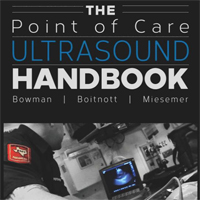
Predictor of Weaning Outcome Using Sonographic Assessment of Post-intubation Laryngeal Obstruction
The study determined that both cuff leak volume and ultrasound-guided LACWD exhibited excellent sensitivity and specificity in predicting clinically significant upper airway blockage post-extubation, with cuff leak volume... read more
Atypical Presentation of Pulmonary Embolism in Patients with Refractory Hypoxemia and Dyspnea
Pulmonary embolism (PE) should be strongly considered in patients presenting with refractory hypoxemia and dyspnea, even in the absence of clinical signs of deep vein thrombosis (DVT). This study highlights the importance... read more
Transtracheal Ultrasound as a Preventive Tool for Endotracheal Tube Malpositioning in the ICU
Endotracheal tube (ETT) malpositioning can result in a myriad of complications. Daily chest radiographs (CXR) is the gold standard in monitoring these complications. Point-of-care transtracheal ultrasound (TTUS) is an emerging... read more








